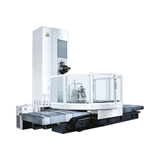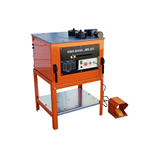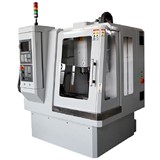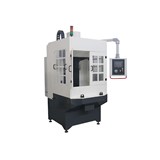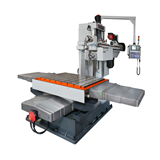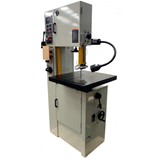Buying a CNC lathe in Australia? Learn about prices, key machine types, maintenance, warranties & what to check before you invest. Stay compliant & cost-smart.
Key takeaways
- Average price range: CNC lathe and turning machines in Australia range from $20,000 to over $250,000, depending on size, axis configuration, and automation features.
- Entry-level machines: Priced from $20,000 to $60,000, ideal for small workshops or low-volume production.
- Mid-tier machines: Expect to pay between $60,000 and $150,000, suited for moderate to high-volume use.
- High-end machines: Range from $150,000 to $300,000+, used in aerospace, mining, and precision manufacturing.
- Lead times & installation: Allow 6–10 weeks for delivery, site prep, and setup.
- Ongoing costs: Budget $5,000–$15,000 annually for maintenance and part replacement.
- Tax & finance: Machines may qualify for instant asset write-off or chattel mortgage. Finance options available for up to 100% of purchase cost.
- Compliance: Machines must comply with AS 4024.1 Safety of Machinery and Work Health and Safety (WHS) regulations.
Introduction
Investing in a CNC lathe or turning centre is a major decision for Australian manufacturers, metalworkers, and jobbing shops. These machines offer unmatched precision, repeatability, and automation for producing cylindrical components across industries like mining, defence, aerospace, automotive, and agriculture.
This guide is your complete reference for understanding CNC lathe and turning machine prices in Australia. We cover types, operational factors, running costs, parts, compliance, and frequently asked questions so you can buy with confidence.
Types of CNC lathe & turning machines
Understanding the machine type is key to aligning your purchase with your production goals:
2-axis CNC lathes
- Basic turning with X and Z axes
- Used for general cylindrical shaping
- Ideal for: Simple shafts, bushings, pins
Multi-axis turning centres (3+ axes)
- Include Y-axis, live tooling, sub-spindles
- Enable milling, drilling, and off-centre machining
- Ideal for: Complex parts with secondary features
Swiss-type lathes
- Fixed and sliding headstock; high precision
- Designed for small-diameter, long-length parts
- Ideal for: Medical, electronics, and aerospace
Vertical CNC lathes (VTLs)
- Vertical orientation, gravity-assisted
- Used for large, heavy parts
- Ideal for: Valve bodies, turbines, large bearings
CNC lathe machine prices in Australia
Entry-level (2-axis)
- Price: $20,000 – $60,000
- Features: Basic automation, manual tool change
Mid-range (3–4-axis)
- Price: $60,000 – $150,000
- Features: Live tooling, bar feeders, programmable tailstock
High-end (5+ axis, Swiss-type)
- Price: $150,000 – $300,000+
- Features: Full automation, advanced CNC control, robotic loaders
Factors affecting cost
- Machine size and spindle power
- Control system brand (Fanuc, Siemens, Heidenhain)
- Tooling and turret configuration
- Automation (bar feeders, gantry loaders)
- Customisation and after-sales support
Operating and maintenance requirements
Daily operation
- Check coolant levels, tool wear, and alignment
- Calibrate as per manufacturer's schedule
Scheduled maintenance
- Replace filters, inspect ball screws, check lubrication systems
- Frequency: Every 500–1000 hours of operation
Annual costs
- Basic servicing: $3,000–$6,000/year
- Parts replacement: Tool holders, belts, coolant pumps ($2,000–$5,000/year)
Common replacement parts and pricing
- Tool turrets: $8,000 – $15,000
- Spindle motors: $5,000 – $12,000
- Ball screws: $1,500 – $4,000
- Control panels/screens: $2,000 – $7,000
- Coolant system pumps: $800 – $2,500
Stock high-wear parts to reduce production downtime.
Finance options in Australia
Financing your CNC machine preserves working capital and allows faster upgrades.
Popular finance types
- Chattel mortgage: Own the asset; claim GST, interest, depreciation
- Hire purchase: Fixed term; asset ownership at end
- Lease finance: Pay to use; flexible upgrades
Finance snapshot
- Up to 100% of equipment cost financed
- Repayment terms: 1–5 years
- May include install, delivery, tooling
To explore flexible, fast, and competitive financing tailored for CNC Lathe & Turning Machine, check out Easy Asset Finance. Their expert team can help you secure the best terms to preserve your cash flow and grow your business.
Warranty and after-sales support
Standard warranty periods
- Machines: 12–36 months parts and labour
- Spindles: Often covered under separate warranty (24+ months)
What to check
- Parts availability in Australia
- Onsite servicing capability
- SLA (Service Level Agreements) for repair timeframes
Compliance and certification in Australia
Australian buyers must meet both national standards and workplace safety requirements:
- AS 4024.1 Safety of Machinery
- Work Health and Safety (WHS) Regulations (Safe Work Australia)
- Electrical compliance: Must comply with AS/NZS 3000:2018 (Wiring Rules)
- Machine guarding: Must protect from pinch points and moving parts
- Noise levels: Comply with Safe Work Australia's noise exposure standards
Tip: Get a compliance certificate from your installer to avoid retrofit costs.
Post-installation training and skill development
Buying a CNC lathe is only the first step—operator training is key to performance, safety and ROI. Here’s what you need to know:
Operator training time in Australia
Most suppliers recommend 1–2 weeks of hands-on training per operator, covering:
- Startup and shutdown procedures
- Tooling and workholding setup
- Basic G-code use and controller navigation
- Preventative maintenance and fault checks
For 5-axis or multi-tasking lathes, allow for 2–3+ weeks.
On-site vs remote learning
Australian suppliers commonly offer:
- On-site training during installation
- Remote or hybrid options via Zoom, videos or portals
- Refresher training after a few months of use
Confirm whether training is included in your machine price or billed separately.
Accredited CNC training in Australia
For formal qualifications or upskilling:
- TAFE NSW, Queensland, Victoria, and SA offer relevant programs
- Common certifications:
- Cert III in Engineering – Mechanical Trade (MEM30219)
- Cert IV in Engineering (MEM40119)
- Short courses are available for Fanuc, Siemens or CAD/CAM systems
Common questions CNC machine buyers ask
What size CNC lathe do I need?
- Base this on the largest part diameter and length you expect to machine. Add 20% for growth.
Do I need an operator with experience?
- Yes, CNC lathes require qualified machinists or CNC programmers. Allow time for training if transitioning from manual lathes.
Can I buy a used CNC lathe?
- Yes, but inspect machine hours, control system compatibility, and service records.
- Used machines typically sell for 30–60% of original cost.
How long does installation take?
- From delivery to production, allow 2–4 weeks for setup, calibration, and training.
Will it fit in my workshop?
- Measure footprint + space for doors, conveyors, and operator access.
- Machines typically need 3-phase power (415V) and adequate floor load capacity.
Final thoughts
Whether you’re scaling up operations or upgrading outdated machinery, choosing the right CNC lathe or turning centre is essential to efficiency, precision, and profitability. Make sure to budget realistically, factor in after-sales service and parts, and ensure full compliance with Australian safety standards.
A trusted supplier and finance partner can make the transition smoother and help future-proof your investment.


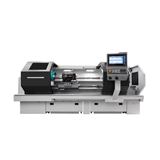
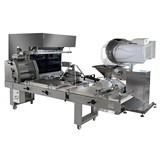




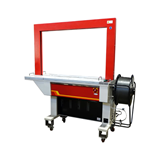

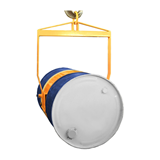
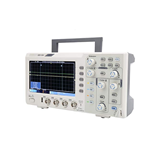
-160x160-state_article-rel-cat.png)
